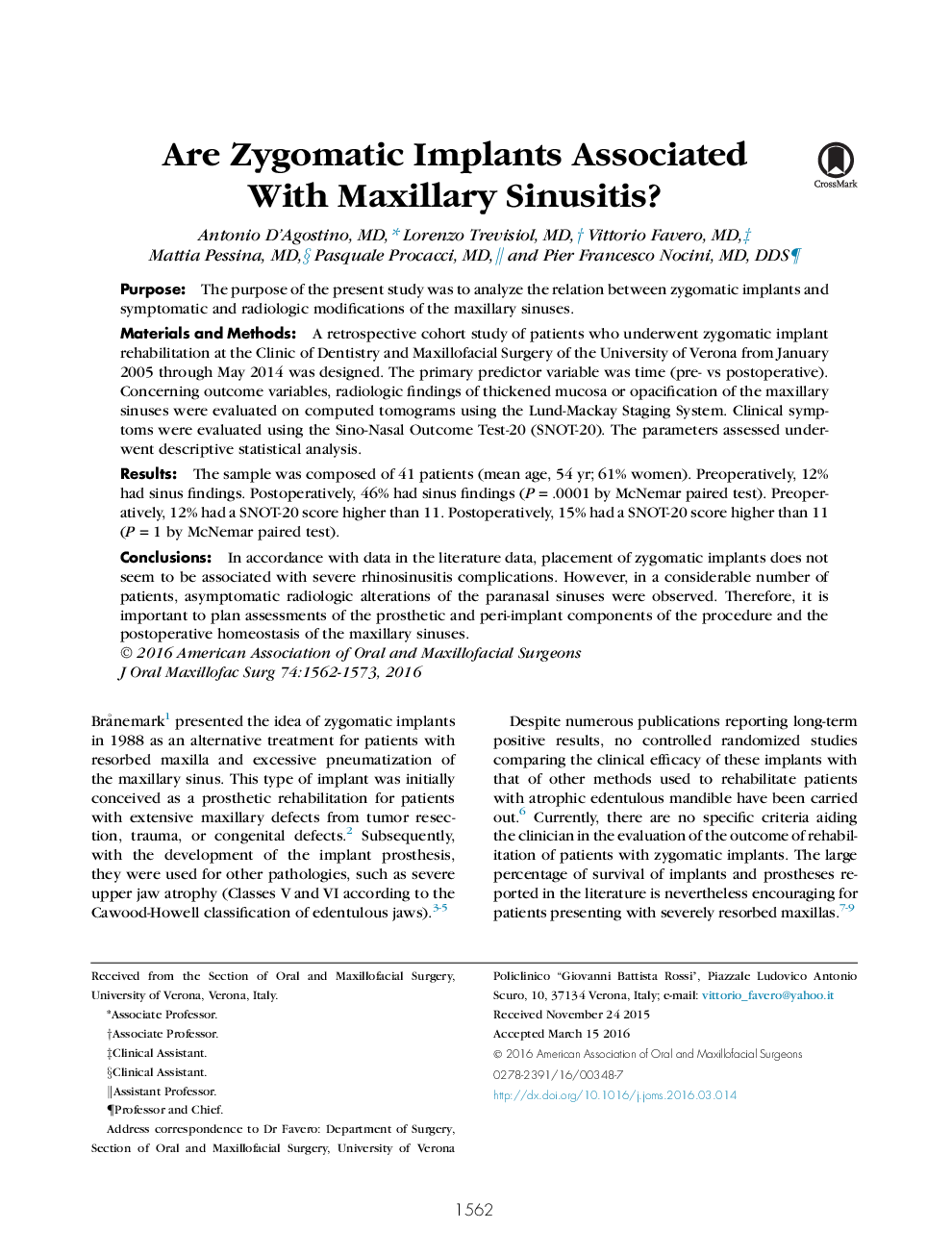| Article ID | Journal | Published Year | Pages | File Type |
|---|---|---|---|---|
| 3155411 | Journal of Oral and Maxillofacial Surgery | 2016 | 12 Pages |
PurposeThe purpose of the present study was to analyze the relation between zygomatic implants and symptomatic and radiologic modifications of the maxillary sinuses.Materials and MethodsA retrospective cohort study of patients who underwent zygomatic implant rehabilitation at the Clinic of Dentistry and Maxillofacial Surgery of the University of Verona from January 2005 through May 2014 was designed. The primary predictor variable was time (pre- vs postoperative). Concerning outcome variables, radiologic findings of thickened mucosa or opacification of the maxillary sinuses were evaluated on computed tomograms using the Lund-Mackay Staging System. Clinical symptoms were evaluated using the Sino-Nasal Outcome Test-20 (SNOT-20). The parameters assessed underwent descriptive statistical analysis.ResultsThe sample was composed of 41 patients (mean age, 54 yr; 61% women). Preoperatively, 12% had sinus findings. Postoperatively, 46% had sinus findings (P = .0001 by McNemar paired test). Preoperatively, 12% had a SNOT-20 score higher than 11. Postoperatively, 15% had a SNOT-20 score higher than 11 (P = 1 by McNemar paired test).ConclusionsIn accordance with data in the literature data, placement of zygomatic implants does not seem to be associated with severe rhinosinusitis complications. However, in a considerable number of patients, asymptomatic radiologic alterations of the paranasal sinuses were observed. Therefore, it is important to plan assessments of the prosthetic and peri-implant components of the procedure and the postoperative homeostasis of the maxillary sinuses.
